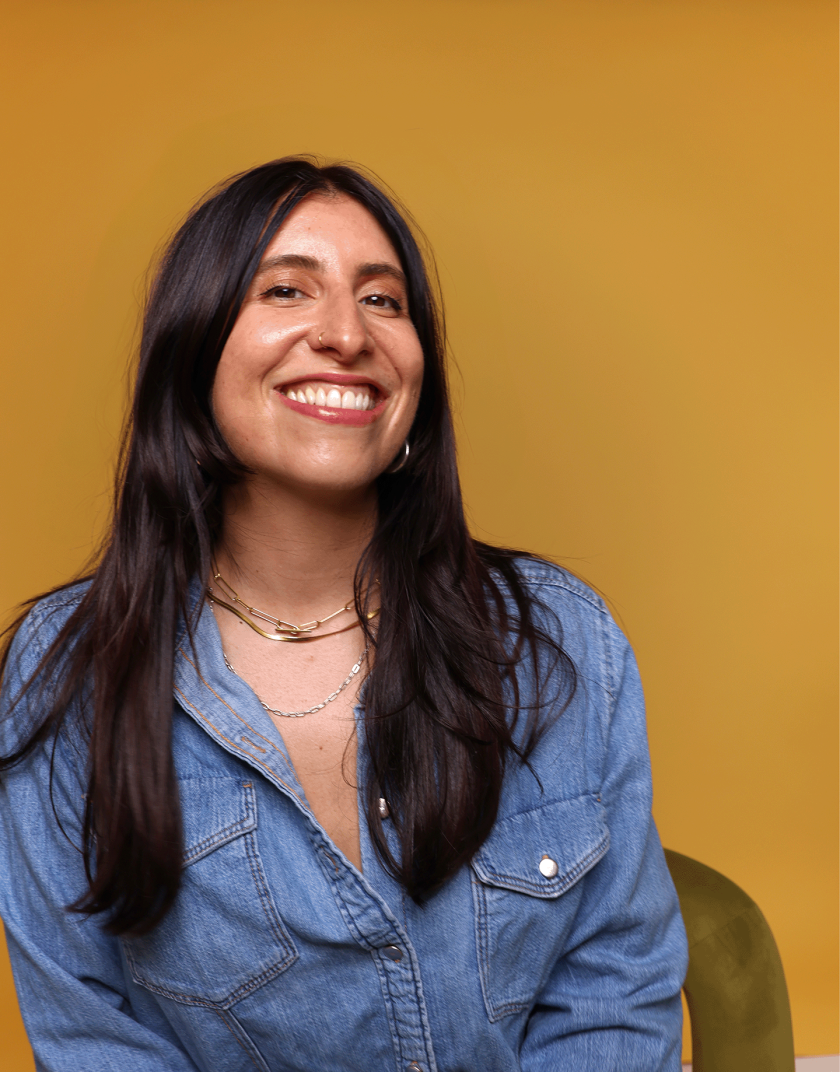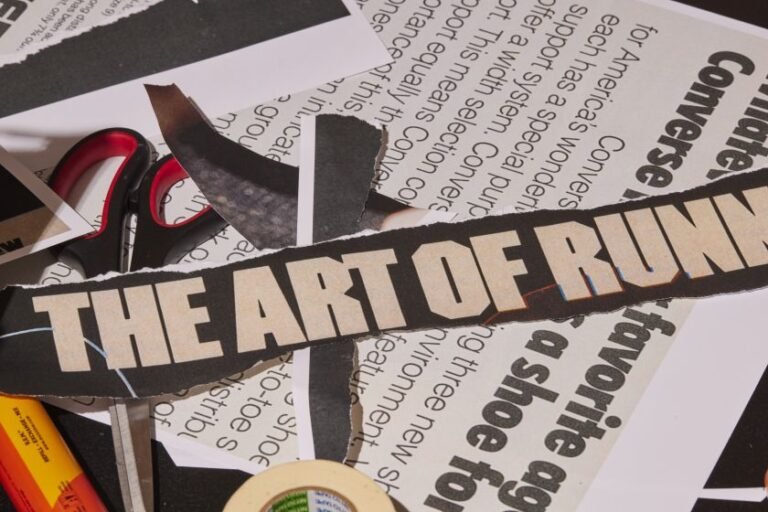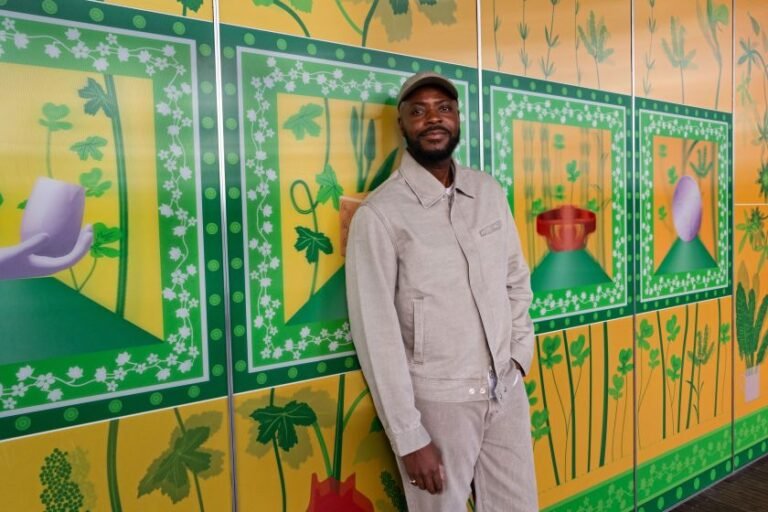

In this edition, part of our Work-Life Balance & Boundaries theme, we speak with Teresa Ferreira, founder of Ferrgood Studio, about deconditioning hustle culture, protecting creative energy, and why running a values-led business means leading yourself first.
After years working at the top of the design world – including as Head of Design at the Financial Times – Teresa Ferreira left corporate life to build something slower, more spacious, and more intentional. Through Ferrgood Studio, she helps purpose-driven brands create timeless design. However, behind the studio’s success lies a deeper journey of redefining ambition and learning to listen to her own limits.
In our latest Q&A for In Her Own Words, Teresa opens up about burnout, boundaries, and the rituals that help her stay grounded in a fast-moving industry.

Have you ever struggled with setting boundaries in your career, and how did you handle it?
I’ve burned out a few times, first in my corporate career and again since starting my own business. So yes, I’ve definitely struggled to set healthy boundaries between work and life. I’m a recovering workaholic with a focus on recovery.
There are many layers to this. My parents are both insanely hard workers and always praised that trait, so that set the tone early. Add to that a squiggly, non-linear career path, sprinkle in some imposter syndrome, and you’ve got a recipe for tying your self-worth to your output.
And then, of course, there’s the creative industry. It’s competitive, recognition-driven, and full of pressure to constantly outperform. It’s a perfect environment for overworking to thrive.
But here’s the thing. I’ve been deconditioning, even as I write this. It took a few burnouts, complete with anxiety and panic attacks, to realise I didn’t want to end up there again. One of the biggest moves I made to protect myself was leaving corporate and starting my own business.
It’s not a magic fix. It’s a steep learning curve, for sure. However, reclaiming my creativity and time has brought genuine joy back into my work, my purpose, and my everyday life. Now, the challenge is knowing when to switch off and actually recharge.
Running your own business constantly forces you into the growth zone. It takes serious self-awareness to spot the early signs of burnout and set clear boundaries. Like when I’m allowed to talk about work, because yep, I was that person oversharing about my projects to everyone.
So, is it perfect? Not even close. But working for myself means I can set my own limits, choose the people I surround myself with, and press pause when I need to reset. It’s still a work in progress, but it’s a way more empowering place to be.

How do you protect your creative energy while managing deadlines and demands?
Creative energy is akin to life force energy, also known as Qi. It won’t be there unless you’re doing all the other things that keep you healthy, balanced, grounded, and safe. So, I try to prioritise my health as much as I can. Sleeping enough, eating well, moving my body, journaling, meditating, being in nature — all those very human things that create the foundation for a good life.
Additionally, having a strong support network and creative community has been a significant factor in nourishing and sparking my energy. Whether it’s coworking days, afternoons in galleries, exhibitions, brainstorming sessions or accountability check-ins, those moments of connection have been essential to helping both me and my studio grow.
Travel is also a big one. I truly believe that seeing the world and connecting with different cultures opens your mind in a way that fuels creativity. I travel as much as I can whenever it feels sustainable to do so. I also draw inspiration from music, books, art, photography and cinema, and I try to expose myself to as much of that as possible.
And finally, I always strive to stay connected to the reason I do this work. It brings me immense joy to create for a living, to be compensated for my design work, and to share my passion for this craft in a way that benefits both people and the planet. That perspective really helps ease the pressure that can come with deadlines and demands.

Have you ever felt pressure to constantly ‘hustle,’ and how do you push back against that?
I’d be lying if I said I don’t feel that pressure. This is a competitive industry, and standing out or getting hired isn’t always easy. That hustle mentality is always lurking because, realistically, you never quite know when the well of clients or work might dry up.
The truth is, I’ve struggled with this. I’m not a natural salesperson, and I definitely don’t enjoy shouting about myself. I’ve even been known to awkwardly deflect compliments. So, I’ve had to approach the idea of hustling from a different angle.
Instead of following the traditional hustle path, I strive to maintain a more detached perspective. I put my work out there with intention and let people find me if I’m their vibe. I’m not chasing or obsessing over working with client A or B. That mindset shift has helped me protect my energy. I genuinely believe there’s enough to go around and that the right work will find its way to me.
Diversifying my services has also played a huge role in this. It’s allowed me to move away from scarcity thinking and step into something more sustainable and spacious. The competitive, high-stress hustle approach just doesn’t sit well with me. I don’t think it brings out the best in people, and it definitely doesn’t bring out the best in me.
To summarise, I’m not about the “hustle life”. I prefer intentional connection, collaboration, and giving before receiving. That energy has served me well so far, so why mess with what’s working?

What does a balanced life look like for you, and how do you work towards it?
Balance is underrated and, honestly, quite hard to recognise when you’re in it. It’s like hindsight – you only realise you had it once you compare it to something else.
But let’s not get too philosophical. A balanced life is my ultimate goal. Ideally, it would look like a 50/50 split between work and everything else. Right now, if I’m being honest, it’s more of an 85/15 situation. And yes, work is winning.
So, what does balance look like in practice? It’s a day where I wake up energised, go for a walk in nature, then have breakfast and do a bit of journaling or meditation. I’d get a few solid hours of focused work in, then break for a healthy lunch with a friend. Perhaps a couple of sparky meetings in the afternoon, followed by some physical activity — such as a trip to the gym or Pilates. Then, a very ordinary evening of house chores, reading, cooking, and an early night.
In this balanced version of my life, switching off feels easier. I’ve come to terms with the idea that my self-worth isn’t tied to my productivity or achievements.
That said, I’m still ambitious. I want to grow the business to a point where I can choose what I’m hands-on with. That’s already starting to happen in small ways, but I still carry a lot of my work into my personal life — it lingers in my thoughts, sneaks into my dreams, and takes up too much mental space. So yes, it is very much a work in progress.
I’ve also realised that running a business means carving out time to work on it, not just within it. That might mean a mentoring session with someone who inspires me, an hour to reset goals, or a moment to reflect on what’s actually working. In an ideal balanced life, I’d make much more space for this kind of strategic thinking.
For me, a balanced life is one where there’s more time for myself, my family, and friends, as well as for learning and growth. From there, everything flows better. The decisions get clearer, the work gets stronger, and I show up as the version of me that can actually lead this business well. Funny how it’s all connected.


